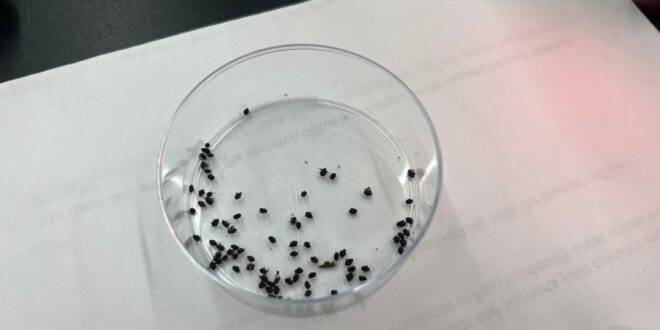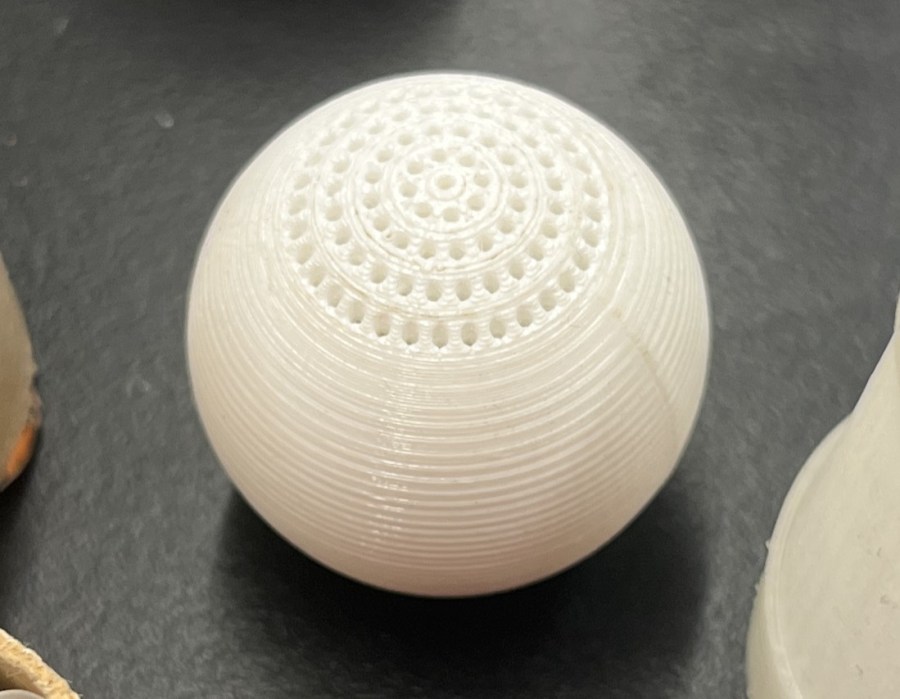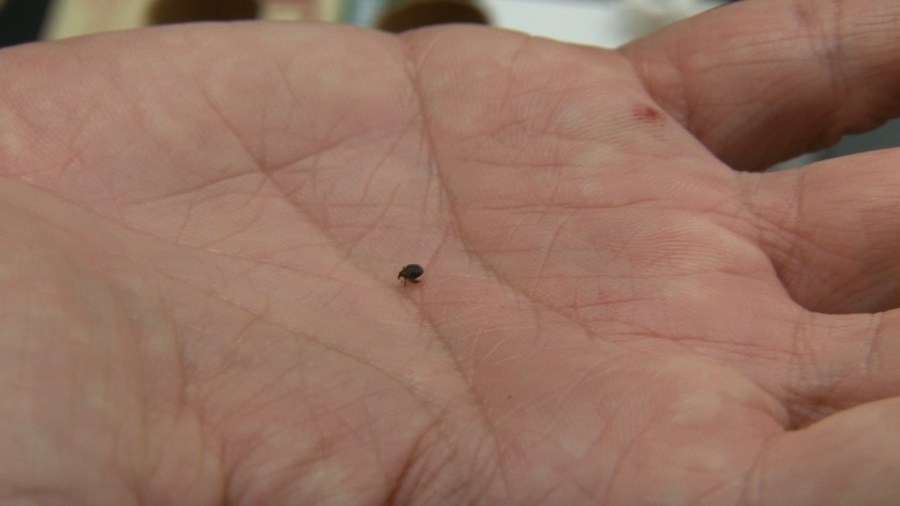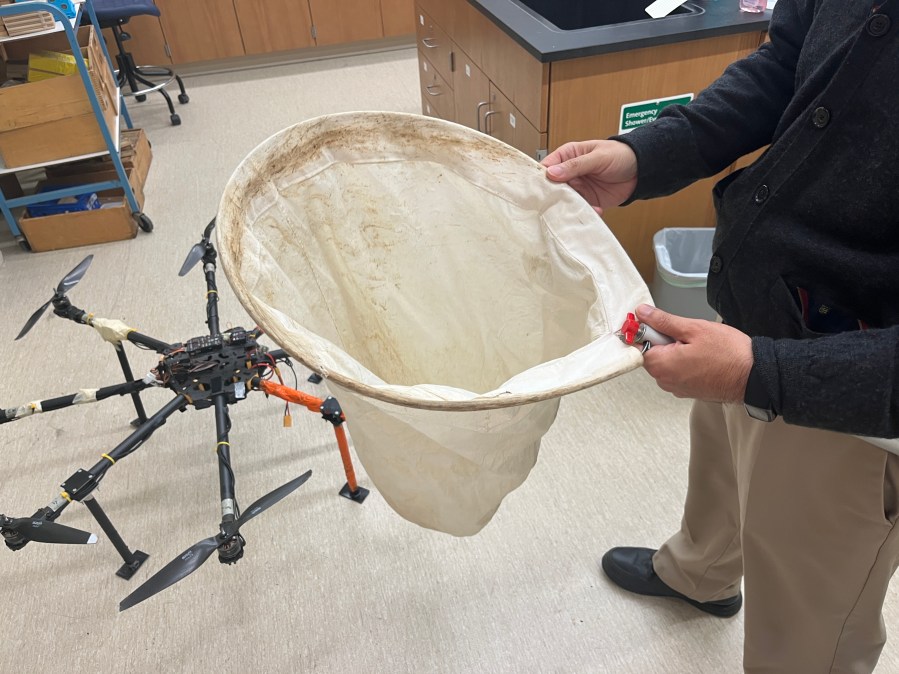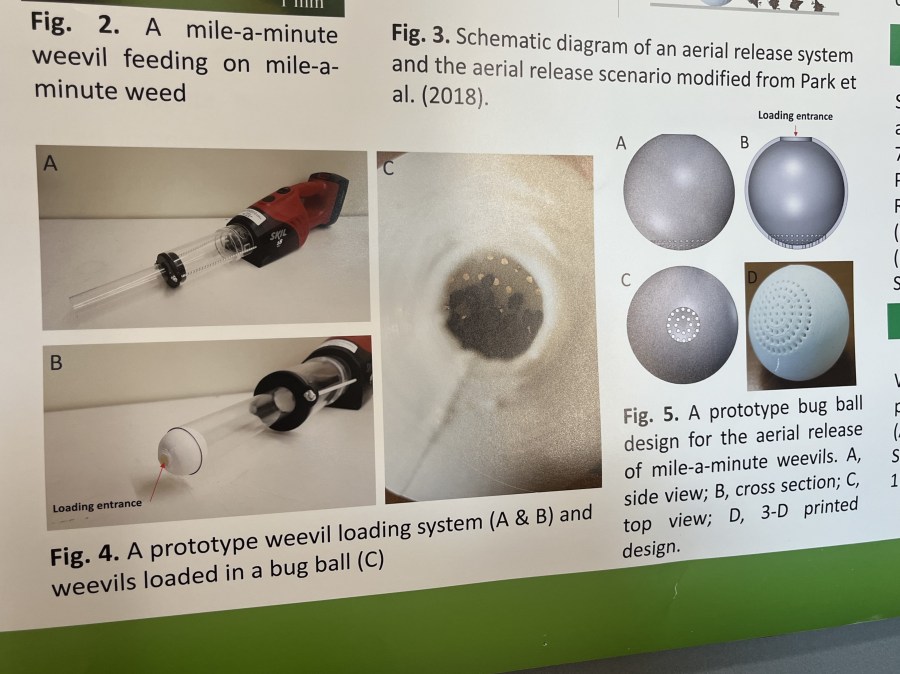MORGANTOWN, W.Va. (WBOY) — A West Virginia University researcher is using drones and machine learning to identify and destroy invasive plants without the need for chemicals or herbicides.
Dr. Yong-Lak Park, a professor of entomology at WVU, is combatting non-native plant species, like mile-a-minute weed, Japanese knotweed and purple loosestrife, by strategically dropping pods of insects or “bug bombs” onto plants with drones. Park said that because of West Virginia’s difficult terrain, drones are perfectly suited to finding invasive plants in hard-to-access areas.
“The reason we chose those three invasive plants is because they have natural enemy insects,” Park said in an interview with 12 News. “We imported those natural enemy insects from the country of origin of those invasive plants. The good news is that the insects eat only that plant, so they won’t eat other native plants.”
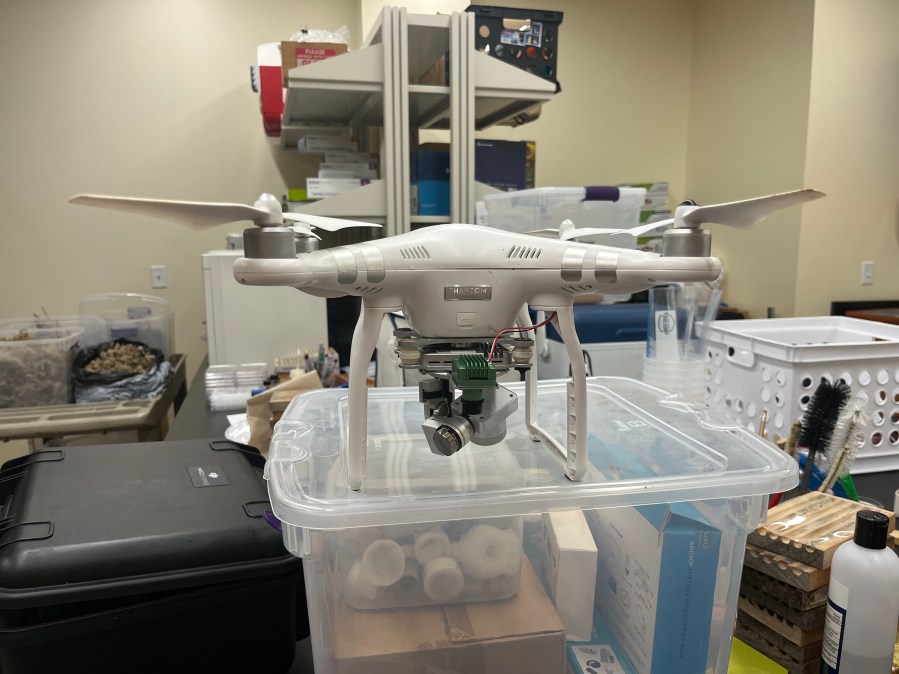
Right now, Park’s research is focusing primarily on mile-a-minute weed, which is eaten by a certain type of weevil. Park can locate clusters of mile-a-minute weed using his fleet of drones, which are equipped with thermal cameras. These cameras allow Park to look for particular parts of the weed. For example, Park can use a drone with a thermal camera to look for the seed clusters of mile-a-minute weed, which will be at a different temperature than other plants. Park then uses machine learning and artificial intelligence to figure out which plants are invasive and which are native.
Once a patch of mile-a-minute weed has been identified, a biodegradable ball filled with weevils is dropped from the drone. However, even though he’s using drones and advanced cameras, Park says the weevils are actually the most costly part of his research.
To get the number of insects needed for his research, Park was sourcing weevils from the New Jersey Department of Agriculture (NJDA), but this came with a few drawbacks:
- The NJDA was only able to supply Park with around 500 weevils per year, which isn’t that many when you may need hundreds of weevils to take out a single plant.
- Buying the weevils was prohibitively expensive, costing $1 per bug, which adds up quickly according to Park.
So, instead of buying bugs from New Jersey, Park gathers them himself at a nearby patch of mile-a-minute weed using a bug net. Then he uses a handheld vacuum to load the weevils into the bug balls.
Park said he’s conducting his research in counties across West Virginia, particularly near the Ohio River and central West Virginia where Japanese knotweed and mile-a-minute weed are commonly found. Once an invasive plant has been eaten, Park then drops a “seed bomb” to occupy the space to prevent the invasive plant from returning.
Because he is researching several different plants, Park is using different species of insects to combat each one. For Japanese knotweed, Park said they are using a certain type of Psyllidae, a species of jumping plant lice. However, Park said the Psyllidae are much more fragile than the weevils, so a different bomb delivery method must be developed.
Park also said that laws and regulations have been an obstacle in his research as well, particularly for plants like Japanese knotweed that are found near waterways used for drinking water.
“Technology has been advancing so fast, but one of the problems I see is there are still laws and regulations that are still on the bottom,” Park said “So, even though we have the technology, we may not be able to use it, to comply with the rules and regulations.”
With that in mind, Park is still optimistic that an interested company or organization will see the potential of a remote and automated invasive species destruction system and make the technology widely available. If and when that happens, appropriate laws, guidelines and regulations will be established to make sure the practice is used responsibly.
 Unmanned Aerial Vehicle The latest drone news
Unmanned Aerial Vehicle The latest drone news
